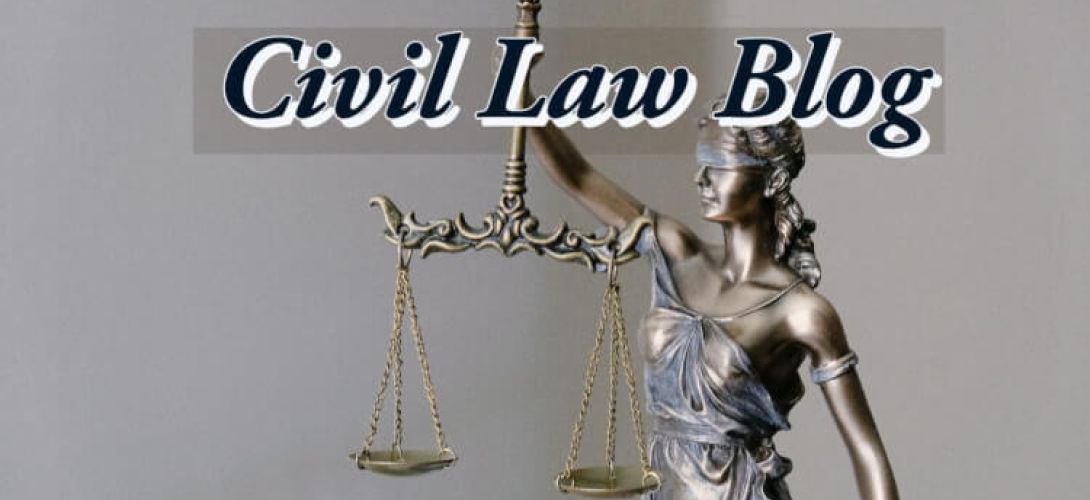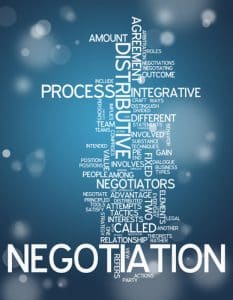
Personal Injury Mediation | Who are Participants and What Happens?

Personal Injury Mediation | Who are Participants and What Happens?
Understanding Mediation for Personal Injury Victims

Mediation And Cases
The court will set up a mediation or arbitration date at the CMC. These are meetings between both sides, where a judge or professional mediator helps both sides try and settle. So the idea is to come up with a dollar amount and avoid a trial and more expenses associated with litigation.
- Mediation involves negotiations conducted by impartial parties. The idea is to resolve issues. There is a more particular meaning of reconciliation when referring to a personal injury case.
It involves specific procedures, expectations, and actors. Below is a closer look at the probable outcome of the mediation and what a person can expect.
Mediation Participants:
- The Mediator – A personal injury case mediator is impartial to the case and has obtained a certificate for dispute resolution. And in many situations, this is a judge or mediator who doesn’t maintain an active interest in the case. They will also understand personal injury law. Last, mediators are typically paid a flat fee. And the plaintiff and defendant usually divide the costs of the fee, paying their portion. A mediator’s interest in resolving disputes often results in more intervention work, as their reputation improves with each successful resolution.
- Counsel for Defendant – The lawyer or lawyers representing the defendant. But they generally have a thorough knowledge of the case and often lead to opening arguments in the defendant’s interest. They also take part in the negotiation process for settlements the defendant may seek.
- Insurance Adjuster or Carrier for Defendant – An insurance representative (adjuster) for the accused will represent the insured. In some cases, the defendant attends this part of the mediation. But in some situations, they do not. The adjuster will usually participate in mediation, but not always. Adjusters often have the last say on the amount of settlement offered. And they also must accept a final demand for an agreement.
- Counsel for Plaintiff – This is a personal injury lawyer representing you, the plaintiff. So they present the defense with a short opening presentation about the strong points of your case. They lead negotiations for the settlement and then will defer this to you.
- Plaintiff – This refers to the individual or their legal representative that brought the claim about. Legally, the plaintiff has the last word in determinations made for amounts demanded and decisions to accept settlement amounts.
What Should I Expect in a Personal Injury Mediation?
Below is a step-by-step explanation of the usual mediation process.
- The parties involved enter Room – The defendants and the plaintiffs enter a confidential, secure conference room. All sit on opposite sides of a conference table. Also, the mediator usually remains seated at the head of the table.
- The process of mediation – Here, the mediation process gets explained in about ten minutes. Hopefully, this will foster a favorable settlement environment. So decision-making parties need to remain in attendance to obtain a good-faith resolution. As an encouragement to settle, the mediator may also explain the benefits of reaching an agreement and the uncertainties involved with going to trial.
- The plaintiff presents the case – The mediator invites the plaintiffs to submit a presentation of the case’s points. This process can last only five minutes, or it can take as long as two hours. While they may attend, the client does not participate in this process.
- Defendant presents the case – Next, the accused gets an opportunity to show the strong points of their situation and answer any plaintiffs. They generally also highlight the fact that each party is in attendance in good faith. This process can last anywhere from a few minutes to about one hour. While they may attend, the defendant does not participate in this process.
- Parties of the case separate –At this point, the mediator will request that each party divide into different conference rooms. While this frequently happens before the first demand, it can also occur after.
- Opening demand gets presented – Plaintiff makes an opening demand. (opening settlement offer).
- Mediation starts – Defense counsel then discusses the demand with the mediator. A counter-offer usually will be transmitted to the other party, and so on. This process continues and, in some situations, only lasts about 30 minutes. But sometimes, the back and forth takes several days.
- After negotiations – At this point, parties should have an agreed number for a settlement. Or the mediation will end with no settlement number.
- Draft documents for Settlement Signatures, signatures are added to the settlement release after reaching terms that are spelled out in legal documents. This process usually takes around 30 minutes.
- Claims get dropped, or settlement funds get distributed – The insurance company will specify the settlement funds timeline for transferring funds in the settlement contract. Also, the plaintiff signs releases of the defendant’s legal liability. The payment deadline will usually range from as little as 15 days to 60 days.

Communicating During the Negotiation Process
One of the things that people think of when they think of personal injury mediation is recovering money for a seriously hurt or dead victim. Typically a traffic accident is what led to the negotiation in the first place. But now the parties are there; it affords each side to size the other up, not just talk about money.
And it is not a clear-cut process what the first offer. The defense will rarely the defense know what the plaintiff deserves or fair settlement amounts. But instead, it is a starting properly. Sometimes, cases were not handled correctly. So one party or the other can come away feeling insulted. In some instances, they may even respond by saying they will not even entertain a settlement or make a cheap offer.
Further, the party may think that they are bidding against themselves. It is a waste of their time since others are failing to act in good faith. Their issue is to have the other party make the first offer. Or they need to send them a dangerous message.
Is Mediation All About Money?
Indeed, mediation in civil court litigation claims is generally about money. This mediation will discuss the facts, liability, and bargaining, with the mediator bringing the numbers to each of the parties. At the same time, the mediator will attempt to keep the parties at ease and confident that they will be able to reach an equitable settlement through negotiations.
In some cases, before reaching the bottom line, one or both parties can become frustrated, tired, and angry. So this results in them ending the negotiations. Mediation is not a fun or relaxing process. And the only real relief felt by either party is when a settlement is reached that is agreeable to both sides.
“How to Mediate Insurance Claims and Other Monetary Disputes by J. Anderson Little,” published by the American Bar Association in 2007, is an exciting read. Any legal professional and mediator should read it since it focuses on how parties communicate in negotiations about money. In his book, Little discusses how individuals interact. And it tells the communication going back and forth between the parties.
Poker Face?
Poker face is the name of the game here. The goal of each party is to show a reachable settlement range. So communication in mediation is indirect, Little says. And this means that neither side will tell the other side exactly what they will settle for. Also, this can result in each party being inadvertently misled.
But deception is also how frustration and anger can start during this process. So rather than the negotiations moving forward, it tells how they fall apart. The book was initially written for mediators. But it shows great insight for other legal experts who find themselves and their clients in the mediation process. Having a mediator who is insightful and resourceful is an advantage to all.
Plaintiff Starting Too High Kills Negotiations?
In Little’s scenario, the plaintiff’s case had been evaluated between $35,000 and $50,000. So $35,000 is the bottom line the plaintiff should expect to settle for in mediation. And $50,000 would be the top range that would be a settlement amount or court award.
So if the plaintiff goes into mediation starting high at $100,000, using the theory that unless they start high, they would not be able to settle for the amount they deserve. This process will usually not work as thought. After all, the other party will feel this is a ridiculous demand. So they will counter exceptionally low with a figure such as a couple of thousand dollars. That will enrage most plaintiffs who will disagree with a number that is a bit lower, such as $98,000.
This is not an uncommon situation during the negotiation process when money is involved. And it is also common for a plaintiff to ask for much more than their case supports when analyzed. When this happens, the defendant either feels they cannot afford this amount or will not settle the case at the increased amount.
Each party preparing to go into mediation will need to evaluate their case to get a rough idea of what they’ll say is fair. That way, they can determine a strategy for the negotiation process. Now they will be able to communicate with the other party. Then they can reach the range where it will be fair for both the plaintiff and the defendant.
How is Evaluation Done?
Evaluation of the case is essential and starts by using the facts from the plaintiff’s case and the defendant’s assertions. This evaluation includes using the laws of discovery. But it is up to each team to decide what other facts they should release to be evaluated by either side. Little explains that this information will need to be provided during mediation to prove the claims.
The information is prepared in a way that will be persuasive in the negotiations and proper application of the law. This evidence will allow the determination of what parts of the case have their weaknesses and strengths. And that will enable the value of the chance to be determined.
- But it isn’t possible to know what offers to accept or the amount to counter without knowing the value of the case.
- So going into negotiations, you need this number.
- Little also discusses that evaluating the facts and the amount settled for is up to the parties involved and not up to the mediator.
- But the mediator can be extremely helpful during the offers and counter amounts.
- The one question can be pondered when determining case values and what the case would settle for if the case went to trial instead of mediation.
What would the trial cost be, and what would the possible outcome be? These are ways that can help the plaintiff and the defendant to be prepared for the case. Now they can go into mediation and have success without going to trial. But rather than reach a reasonable settlement, they can arrive at a great one. I will write more on this subject as I become more experienced in personal injury mediation.
Because of the uniqueness of a situation, each mediation process remains significantly different.
Personal Injury Mediation Approaches
Most legal practitioners know mediation is an excellent chance to settle a case. It allows parties to display their client’s case in its best light before a trial. Even before opposition to a Motion for Summary Judgment, they can show off the entire case’s value. A paying insurance adjuster, defense attorney, or paying client must attend the settlement negotiations.
But parties did not handle significant personal injury cases in this same manner in the past. And it seems to be going backward. But this is good news for hourly defense attorneys who enjoy billing.
Where is the Decision Maker?
More often today, the plaintiff finds the decision-maker absent during mediation. And this remains especially true with many insurance companies like GEICO in CA. Sadly, the defendants can delay the settlement discussions without a responsible party with money in attendance. And it seems like, in multi-party cases, each defendant points at the other one.
Things like this complicate issues and operate as delay tactics. After all, no one is there who can pay. So it needs to go through channels to be approved. And now it’s harder to settle the case at an amount fair to the client. There are ways that the plaintiffs can put a stop to this absurdity.
For example:
- The mediator can find out who will be attending the mediation session.
- Once hearing the meeting is known, determining who makes decisions for each level of coverage is simplified.
- If the critical decision-makers are not present at the mediation, it can be made clear to the defense; the injured plaintiff and the attorney will not attend.
- Consulting a qualified mediator is usually possible before meditating. So they will discuss issues regarding decision-makers.
So don’t attend without a decision-maker who can settle the matter. Pin these people down. Even ask the judge to require the attendance of a decision-maker with authority. Otherwise, shut it down. IT’S BAD FAITH!
What About Mediators and Creative Settlements?
Settlements in personal injury cases have changed how the mediator assists in reaching solutions. They have become more creative. So now, they use techniques to help in settling personal injury cases. One of these is joint mediation sessions. Here, the mediator can use it to influence the insurer’s opinion about the claim.
- In a joint session, the plaintiffs can present the liability facts.
- That way, the mediator can brief people and include a PowerPoint presentation. So they can show the impact this has had on the parties’ lives. After all, it has been hard for the claimant and their family.
These presentations can be a deciding factor while the mediator talks privately with the insurer’s representative after the mediation session has concluded. One of the other advantages of the joint meeting is that it allows the plaintiff or the family to be seen and heard by the adjuster.
The Payor Must Attend?
The payor is the money person and can make a big difference in the case. But preparation is vital for personal injury plaintiffs because the plaintiff must present a persuasive argument. Mediators use private sessions during the first visit with parties separately. So this is where they can listen to the plaintiff’s facts, as there is no one around to hear the more personal aspects of the case. And this can help plaintiffs in negotiating the claim for its actual value.
In the past, they used private sessions with the victim to try and run numbers. But that session is not practical when the plaintiff has sustained significant emotional injuries. For example, imagine a family has suffered the loss of a loved one. They require time for the emotional impact statements, etc. Also, overly emotional people are unable to reason during the negotiation process.
So the mediator must now negotiate through the plaintiff, and s mediators must have excellent listening skills, empathy, and patience. They must realize how difficult this situation is for the applicant. In private sessions with the plaintiff and the defense, both will permit the mediator to examine improbable assumptions about the claim.
This is why the old way of mediating claims no longer works:
- Premeditation Preparation: Premeditation preparation takes a lengthy review of the file. Reviewing briefs and discussing the facts with the attorneys before the mediation helps the mediator. But the mediator needs to know the salient points. Otherwise, reconciliation won’t be practical during these discussions. The mediator may determine whether joint or private mediation sessions are better. This meeting can also help in selecting material issues. That way, the plaintiff and defense can agree on issues that are hard to pin down. This face-to-face can also show the personalities. Plus, it identifies who the decision-makers are. The mediator can research discovery issues, jury verdicts, and coverage issues. So they will be alert to signals when a settlement agreement is near.
- Follow-up: When a claim is at a stalemate in a complaint with a severe injury, it is not uncommon to end this way. Mediators have the experience to know this happens. And in some cases, they find a way to move past this point. Other channels may include depositions, medical examinations, and expert consultations. And there may even be insurance management reviews. Then the mediator will follow up with the lawyers. They do this to find out if parties remain open for further negotiations. Maybe these will lead to an eventual settlement. Mediators often do this at no extra charge. Successful personal injury cases require preparation and strategy by the broker.
But if the mediation ends in a stalemate, it could still result in a later “mediator’s proposal,” And you could settle via fax machine.
Call to Learn More About Personal Injury Mediation
Our Los Angeles injury lawyers will review some of these other issues in future discussions. We hope you enjoyed this article on tactics and strategies for successful mediation in injury claims. And we invite you to read more of our items.
Categories
- A to Z Personal Injury Podcast
- Car Accident
- Government Tort Blog
- Insurance Law Blog
- Piloting and Aviation Accident Blog
- Premises Liability Blog
- Products Defect Blog
- Recreation-Sports Accident Blog
- Reports
- Service Related Cancer Blog
- Sexual Assault Blog
- Spinal Cord Injury Blog
- Torts, Examples, Explanations
- Train Accidents Blog
- TV, Media & Firm News
- Uncategorized
Firm Archive
Main Los Angeles Location

Michael Ehline
Michael Ehline is an inactive U.S. Marine and world-famous legal historian. Michael helped draft the Cruise Ship Safety Act and has won some of U.S. history’s largest motorcycle accident settlements. Together with his legal team, Michael and the Ehline Law Firm collect damages on behalf of clients. We pride ourselves on being available to answer your most pressing and difficult questions 24/7. We are proud sponsors of the Paul Ehline Memorial Motorcycle Ride and a Service Disabled Veteran Operated Business. (SDVOB.) We are ready to fight.
Go here for More Verdicts and Settlements.
